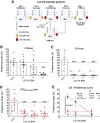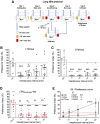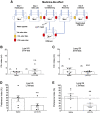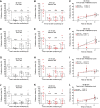Short-term memory reactivation of a weak CS-US association promotes long-term memory persistence in conditioned odor aversion
- PMID: 33858968
- PMCID: PMC8054677
- DOI: 10.1101/lm.053385.120
Short-term memory reactivation of a weak CS-US association promotes long-term memory persistence in conditioned odor aversion
Abstract
In conditioned odor aversion (COA), the association of a tasteless odorized solution (the conditioned stimulus [CS]) with an intraperitoneal injection of LiCl (the unconditioned stimulus [US[), which produces visceral malaise, results in its future avoidance. The strength of this associative memory is mainly dependent on two parameters, that is, the strength of the US and the interstimuli interval (ISI). In rats, COA has been observed only with ISIs of ≤15 min and LiCl (0.15 M) doses of 2.0% of bodyweight, when tested 48 h after acquisition (long-term memory [LTM]). However, we previously reported a robust aversion in rats trained with ISIs up to 60 min when tested 4 h after acquisition (short-term memory [STM]). Since memories get reactivated during retrieval, in the current study we hypothesized that testing for STM would reactivate this COA trace, strengthening its LTM. For this, we compared the LTM of rats trained with long ISIs or low doses of LiCl initially tested for STM with that of rats tested for LTM only. Interestingly, rats conditioned under parameters sufficient to produce STM, but not LTM, showed a reliable LTM when first tested for STM. These observations suggest that under suboptimal training conditions, such as long ISIs or low US intensities, a CS-US association is established but requires reactivation in the short-term in order to persist in the long-term.
© 2021 Tovar-Díaz et al.; Published by Cold Spring Harbor Laboratory Press.
Figures





Similar articles
-
Association of stimuli at long intervals in conditioned odor aversion.Physiol Behav. 2011 May 3;103(2):144-7. doi: 10.1016/j.physbeh.2011.02.020. Epub 2011 Feb 17. Physiol Behav. 2011. PMID: 21334355
-
Differential involvement of cortical muscarinic and NMDA receptors in short- and long-term taste aversion memory.Eur J Neurosci. 2002 Sep;16(6):1139-45. doi: 10.1046/j.1460-9568.2002.02174.x. Eur J Neurosci. 2002. PMID: 12383243
-
High voltage with little current as an unconditional stimulus for taste avoidance conditioning in Lymnaea stagnalis.Neurosci Lett. 2013 Oct 25;555:149-53. doi: 10.1016/j.neulet.2013.09.042. Epub 2013 Sep 26. Neurosci Lett. 2013. PMID: 24076143
-
The transition from memory retrieval to extinction.An Acad Bras Cienc. 2004 Sep;76(3):573-82. doi: 10.1590/s0001-37652004000300011. Epub 2004 Aug 23. An Acad Bras Cienc. 2004. PMID: 15334255 Review.
-
The strength of aversive and appetitive associations and maladaptive behaviors.IUBMB Life. 2014 Aug;66(8):559-71. doi: 10.1002/iub.1310. Epub 2014 Sep 5. IUBMB Life. 2014. PMID: 25196552 Free PMC article. Review.
References
-
- Andrews EA, Braveman NS. 1975. The combined effects of dosage level and interstimulus interval on the formation of one-trial poison-based aversions in rats. Anim Learn Behav 3: 287–289. 10.3758/BF03213446 - DOI
Publication types
MeSH terms
LinkOut - more resources
Full Text Sources
Other Literature Sources
